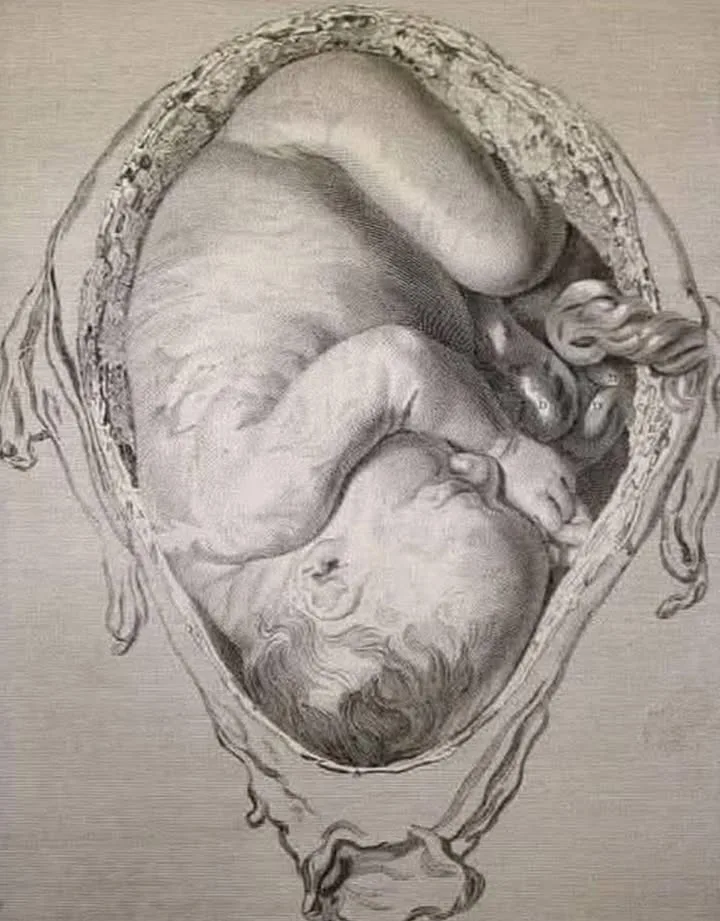Pregnancy is a transformative experience, weaving an emotional and physical bond between mother and child that lasts a lifetime. But beneath the surface, an extraordinary biological exchange takes place, one that leaves a permanent mark on both. This phenomenon, known as fetal-maternal microchimerism, involves the transfer of cells between mother and baby during pregnancy, creating a cellular connection that endures for decades—perhaps forever. These cells don’t just pass through; they integrate into tissues, influence health, and may even shape the profound intuition many mothers feel toward their children. Let’s dive into the science, implications, and mysteries of this remarkable biological bond.

What Is Fetal-Maternal Microchimerism?
During pregnancy, the placenta acts as a bridge, allowing nutrients, oxygen, and—surprisingly—cells to flow between mother and fetus. Fetal cells, including pluripotent stem cells capable of differentiating into various cell types, enter the mother’s bloodstream. Likewise, maternal cells cross into the fetus. This bidirectional exchange, first documented in the 1990s, is called microchimerism because it involves a small population of “foreign” cells persisting in a host’s body.
Unlike most transient biological exchanges, these cells don’t vanish after birth. Fetal cells take root in the mother’s body, embedding in organs like the heart, liver, lungs, skin, and even the brain. Similarly, maternal cells can persist in the child’s body, creating a reciprocal cellular legacy. Studies, such as one published in PLOS ONE (2012), have detected fetal cells in maternal tissues up to 38 years post-pregnancy, suggesting this connection may last a lifetime.
A Healing Touch from Baby’s Cells
One of the most astonishing discoveries about fetal cells is their potential to act as tiny repair crews in the mother’s body. Research published in Circulation Research (2013) found that when a mother’s heart is injured—say, from a heart attack—fetal cells can migrate to the damaged site and differentiate into functional heart cells, such as cardiomyocytes. In mouse models, these cells have been shown to integrate into the heart tissue and contribute to repair, potentially improving outcomes. Limited human studies, including autopsies of mothers with male children (where Y-chromosome cells are easier to track), confirm that fetal cells can indeed become part of maternal heart tissue.
This healing potential isn’t limited to the heart. Fetal cells have been found in other damaged tissues, such as the liver and skin, where they may transform into specialized cells to aid recovery. This suggests that fetal cells, particularly stem-like cells, act as a biological reserve, stepping in to support the mother’s health during and after pregnancy. It’s as if the baby leaves behind a cellular gift, helping to protect the mother long after birth.
A Cellular Mosaic: The Lasting Imprint of Every Pregnancy
Remarkably, this cellular exchange occurs in every pregnancy, whether it reaches full term or not. As long as the pregnancy progresses far enough for placental exchange (typically after the first few weeks), fetal cells can enter the mother’s body. This means that miscarriages, abortions, or pregnancies with multiple children all contribute to the mother’s cellular mosaic. A mother of several children may carry cells from each, creating a unique blend of genetic material in her body. This persistence applies even to pregnancies that ended decades earlier, as shown in studies detecting fetal cells in women well into their 60s and 70s.
The discovery of fetal cells in the maternal brain is particularly striking. A 2012 study in PLOS ONE found male DNA (presumed to be from sons) in the brains of women who had died decades after pregnancy. These cells weren’t just passing through—they had integrated into neural tissues, raising intriguing questions about their role. Could they influence maternal behavior, cognition, or even neurological health? While direct evidence linking these cells to the “maternal intuition” many mothers describe is still speculative, the presence of a child’s cells in a mother’s brain offers a poetic, science-backed explanation for the deep attunement many feel, even when their children are far away.
Health Implications: A Double-Edged Sword
Fetal-maternal microchimerism has profound implications for maternal health, but its effects are complex and not always beneficial. On the positive side, fetal cells may contribute to the improvement of certain conditions during pregnancy. For example, autoimmune diseases like rheumatoid arthritis often go into remission during pregnancy, possibly due to the immunosuppressive effects of fetal cells or pregnancy-related hormones. These cells may help modulate the mother’s immune system, creating a more tolerant environment to prevent rejection of the fetus, which carries paternal DNA.
However, the presence of fetal cells can also have a darker side. Some studies, such as those in The Lancet (2004), suggest that fetal cells may contribute to autoimmune diseases like systemic sclerosis or Hashimoto’s thyroiditis in susceptible individuals. The theory is that these “foreign” cells, which carry paternal genetic material, might trigger an immune response in the mother’s body years later. Similarly, fetal cells have been found in breast cancer tumors, but their role is unclear—some evidence suggests they may help suppress tumor growth, while other studies propose they could promote it. This duality makes microchimerism a hot topic in medical research, with scientists working to unravel when and why these cells act as allies or adversaries.
Maternal Cells in the Child: A Two-Way Street
While much of the focus is on fetal cells in the mother, the reverse exchange—maternal cells in the child—is equally fascinating. Maternal cells can persist in the child’s body into adulthood, potentially influencing their immune system or tissue development. For example, studies in Blood (2008) suggest that maternal cells in the child may contribute to immune tolerance, helping the child’s body distinguish between self and non-self. However, less is known about the long-term effects of these cells, and research in this area is still emerging.
An Evolutionary Perspective
Why does microchimerism exist? From an evolutionary standpoint, it may enhance survival for both mother and child. Fetal cells in the mother could bolster her health, ensuring she’s strong enough to care for her offspring. Maternal cells in the child might prime their immune system or support early development. This cellular cooperation highlights the intricate biology of reproduction, where mother and child are not separate entities but partners in a shared biological dance. Interestingly, microchimerism isn’t unique to humans—it’s been observed in other mammals, like mice and primates, suggesting it’s a conserved trait honed by millions of years of evolution.
Unanswered Questions and Future Frontiers
Despite the progress in understanding microchimerism, many questions remain. How do fetal cells “decide” where to go and what to become in the mother’s body? What determines whether they help or harm? How do paternal genes in fetal cells influence their behavior? And what role do maternal cells play in the child’s long-term health? Researchers are also exploring whether microchimerism could be harnessed therapeutically—for example, using fetal-like stem cells to treat maternal heart disease or other conditions.
Public interest in this topic is growing, as seen in discussions on platforms like X, where users share studies and personal reflections on the mother-child bond. For example, recent posts have highlighted how microchimerism resonates with mothers who feel a lifelong connection to their children, even after loss. As research advances, we may uncover more about how these cells shape health, behavior, and the human experience.
A Bond Written in Cells
Fetal-maternal microchimerism reveals a truth that transcends poetry and touches the core of biology: the bond between mother and child is not just emotional or symbolic—it’s woven into their very cells. Every pregnancy leaves a lasting imprint, a cellular embrace that persists through decades, connecting mother and child in ways we’re only beginning to comprehend. Whether it’s a fetal cell repairing a mother’s heart or lingering in her brain, this phenomenon underscores the profound, enduring nature of motherhood. It’s a reminder that the love and connection we feel are rooted in the intricate, beautiful science of life itself.
Want to dive deeper into the science of microchimerism or explore related topics? Check out studies on platforms like PubMed or follow discussions on X for the latest insights into this incredible biological bond!





